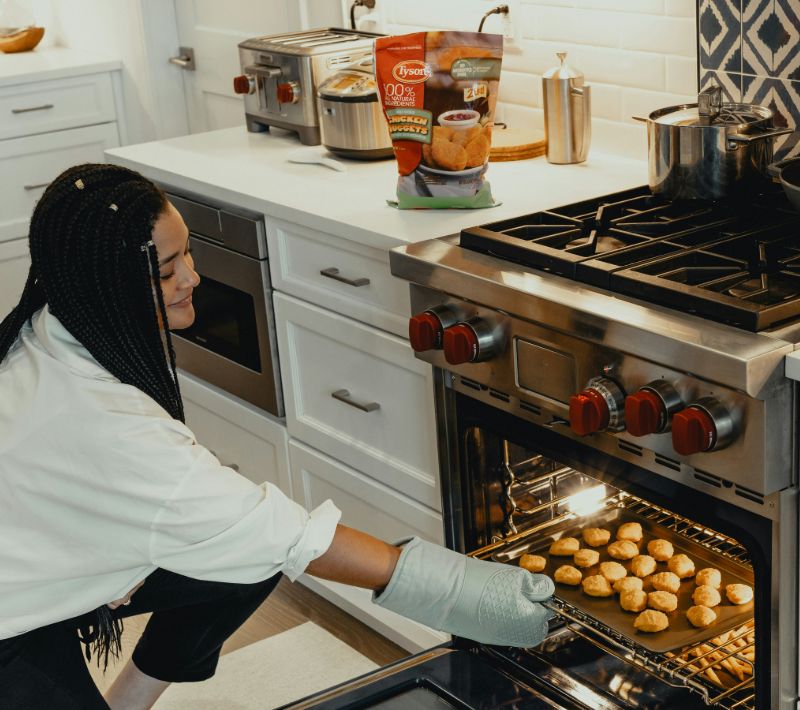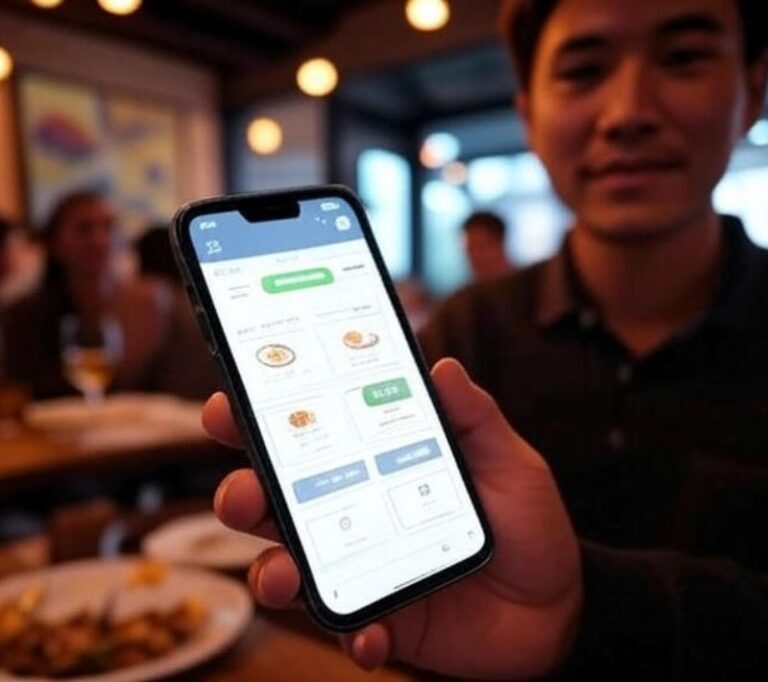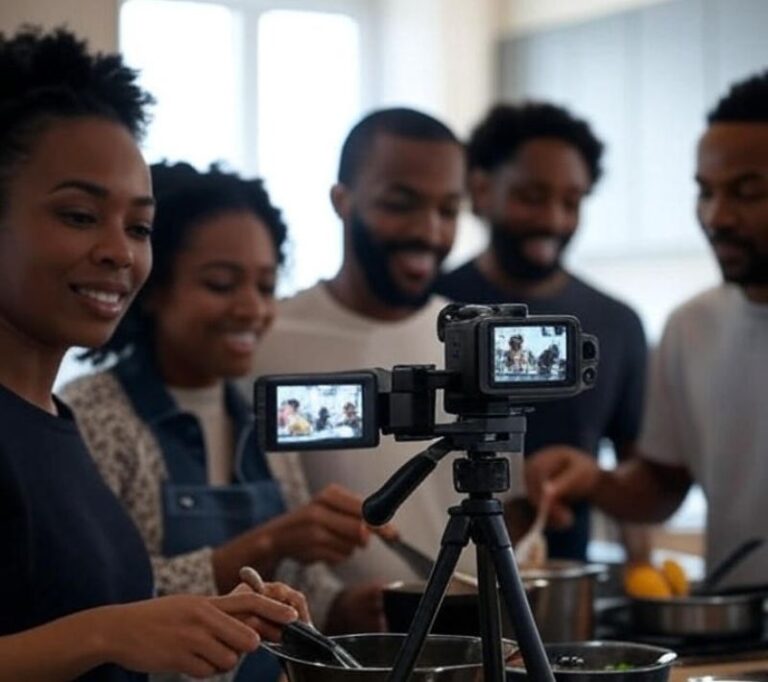The restaurant world is changing fast. In 2025, ghost kitchens (also known as virtual kitchens or cloud kitchens) are leading a quiet revolution in the food industry. If you’ve ever ordered food online but noticed there was no dine-in option or physical restaurant nearby, chances are, you just ordered from a ghost kitchen.
In this guide, we will break down:
- What a ghost kitchen is
- Why they are trending in 2025
- How you can start a profitable virtual restaurant
- The tools, tips, and strategies you need to succeed
Let’s dive in!
What Is a Ghost Kitchen?
A ghost kitchen is a food business that only exists online. There’s no dining area, no waiters, and sometimes, not even a sign outside. Ghost kitchens are built only to cook and deliver food. Customers place their orders through delivery apps or websites, and the food is delivered directly to their door. It is also called: dark kitchen, virtual kitchen or cloud kitchen.
In short, ghost kitchens are delivery-only restaurants. No dine-in space: just a kitchen + online presence.
These kitchens focus on preparing food fast, cutting down on overhead costs like rent, interior design, and front-of-house staff. And because everything runs online, these restaurants often serve more than one food brand from the same kitchen space.
Why Ghost Kitchens Are Booming in 2025
The rise of ghost kitchens didn’t happen overnight. You think it’s just social media hype? Lol, no. It’s smart people making smart moves, and you could be one of them. Here’s why ghost kitchens are winning:
- No need to rent a fancy dining space = way cheaper to start
- You can try out different menus or food ideas
- Perfect for small businesses or side hustles
- You can even start from your house or a shared kitchen
1. Everyone’s Ordering In Now
Apps like Uber Eats, DoorDash, and Glovo made food delivery crazy convenient. People are skipping the restaurant experience and going straight to their phones. They want good food without leaving the couch. Ghost kitchens are built for this, they don’t care about table service or decor. They’re all about fast, direct delivery.
2. Way Cheaper to Launch
Starting a traditional restaurant is expensive. You need to rent a space, furnish it, hire a full team, and deal with a ton of overhead. Ghost kitchens skip all of that. All you need is a kitchen, the right licenses, and a good delivery setup. You can be up and running with way less money, and way less risk.
3. Easy to Try New Ideas
Thinking of launching a taco brand? Pasta? Vegan bowls? You don’t need a whole new space to try something new. With a ghost kitchen, you can test different menus and brands from the same spot. If one idea doesn’t work, shut it down and launch something else. No big investment, no stress, just move on and keep building.
How to Start a Profitable Virtual Restaurant in 2025
Now that you understand what ghost kitchens are, let’s walk through how you can start your own. Below are the steps to build a profitable virtual restaurant this year.
Step 1: Choose a Niche and Target Audience
Like every business, a ghost kitchen needs a clear niche. Do you want to sell burgers, pasta, African meals, or healthy bowls? Also, define who your customers are. Are they busy workers, students, or fitness lovers? You’re not just making food, you’re building a brand.
Figuring this out early helps you:
- Make a menu that makes sense
- Stand out online
- Get more orders from delivery apps
Also, use smart keywords like “best delivery food in [your city]” or “cheap healthy meals near me” in your menus and website. That’s how people find you.
Step 2: Get Yourself a Kitchen (That Delivers Only)
You need a commercial kitchen to cook your food. Remember, you’re not opening a fancy restaurant, you just need a solid place to cook. Therefore you can either:
- Rent your own kitchen space
- Partner with a shared ghost kitchen facility
In big cities, there are companies that rent kitchen spaces to multiple food brands. These come with all the equipment you need and are ready to use.
Bonus tip: Choose a location close to your target customers for faster and cheaper delivery. Faster delivery = happier people (and lower costs for you).
Step 3: Register Your Business
To avoid legal problems, you must register your food business. This includes:
- Getting a business name
- Registering with the food and health authorities
- Following local health and safety laws
Don't skip this step. It helps you look more trustworthy on platforms like Uber Eats and Google Business.
Step 4: Create a Smart, Profitable Menu
Now it's time to plan your menu. Keep it:
- Simple: Choose dishes that are easy to make and deliver
- Unique: Add a twist to stand out from competitors
- Profitable: Use ingredients that are cost-effective and in season
Make sure your food travels well and doesn’t get soggy or spoiled quickly. Also, take great photos of each meal, people eat with their eyes first, especially online.
Step 5: Get on Food Delivery Apps
This is where the money comes in.
Partner with popular food delivery apps like:
- Uber Eats
- DoorDash
- Jumia Food
- Bolt Food
- Glovo
These platforms already have loyal users searching for food. So, list your brand, upload your menu, and optimize your descriptions with keywords like:
- “Best jollof rice in Lagos”
- “Fast lunch delivery in Abuja”
- “Cheap shawarma near me”
Make sure your restaurant name and food items contain searchable phrases.
Step 6: Build a Simple Website or Landing Page
Sure, delivery apps are cool, but having your own site makes you look legit. It gives your brand some muscle. You can collect customer emails, drop exclusive promos, and even write quick blog posts like “Top 5 Lunch Meals for Office Workers in Lagos.”
It’s also great for showing up on Google. Just sprinkle in smart keywords like
- "Affordable virtual restaurant in [City]"
- "Order food online from ghost kitchens"
That’s how people who aren’t even looking for you… find you.
Step 7: Market Your Ghost Kitchen
Making great food is just half the game. The other half? Getting people to know you exist. It’s 2025, so hop on the tools that actually work. Here are some ways to market your virtual restaurant in 2025:
- Social Media: Use Instagram, TikTok, and Facebook to post food videos and offers
- Influencer Marketing: Partner with food bloggers to review your meals
- SEO and Blog Content: Write blog posts that target Google searches like “where to eat in [City]” or “top food delivery brands in 2025”
- Email Marketing: Send discounts and menu updates to customers
And one more thing, always ask for reviews. Good reviews push you up the rankings. It’s free marketing, and it works, honestly.
Step 8: Track Your Performance and Scale Up
Once your kitchen is running, start tracking everything:
- What items sell best?
- Which areas order most?
- What time of day is busiest?
Use the data to improve your menu, focus on popular items, and maybe even open a second virtual brand.
Scaling a ghost kitchen is easier than a traditional restaurant. Since you're not tied to one theme, you can launch new menus, change food types, and even serve different audiences, all from the same kitchen! No new rent. No fancy renovations. Just quick changes and smart ideas.
Pros and Cons of Running a Ghost Kitchen
Let’s quickly break down the advantages and disadvantages of starting a ghost kitchen in 2025.
Pros:
- Lower startup and operating costs
- Quick to launch and easy to scale
- High demand for online food delivery
- No need for expensive decor or customer seating
Cons:
- Heavy dependence on delivery apps
- High competition online
- Limited customer interaction
- Need for strong marketing to build visibility
Final Thoughts: Should You Start a Ghost Kitchen in 2025?
Absolutely, if you plan it well.
Ghost kitchens are no longer a hidden trend. They are now a proven business model in the food industry. And in 2025, with more people ordering in, lower startup costs, and higher demand, there’s no better time to launch your own virtual restaurant.
Just remember:
- Pick a clear food niche
- Use delivery apps and SEO to get noticed
- Keep your menu simple and profitable
- Market like a pro
It doesn’t matter if you're a chef, a food entrepreneur, or just someone who loves cooking, a ghost kitchen could be your next big opportunity. It’s your chance to start something fresh, make money, and stand out in the food game, all while doing something you (probably) love.
All images are sourced from unsplash





1 comment on “What Is Ghost Kitchen? How to Start a Profitable Virtual Restaurant in 2025”
GreatGhost Kitchen Blog Comment breakdown of ghost kitchens—it’s fascinating how the model strips away the traditional dine-in elements and focuses purely on delivery efficiency. One thing I’d add is that with rising rent costs, this model is becoming especially appealing for entrepreneurs looking to test new food concepts with lower overhead.